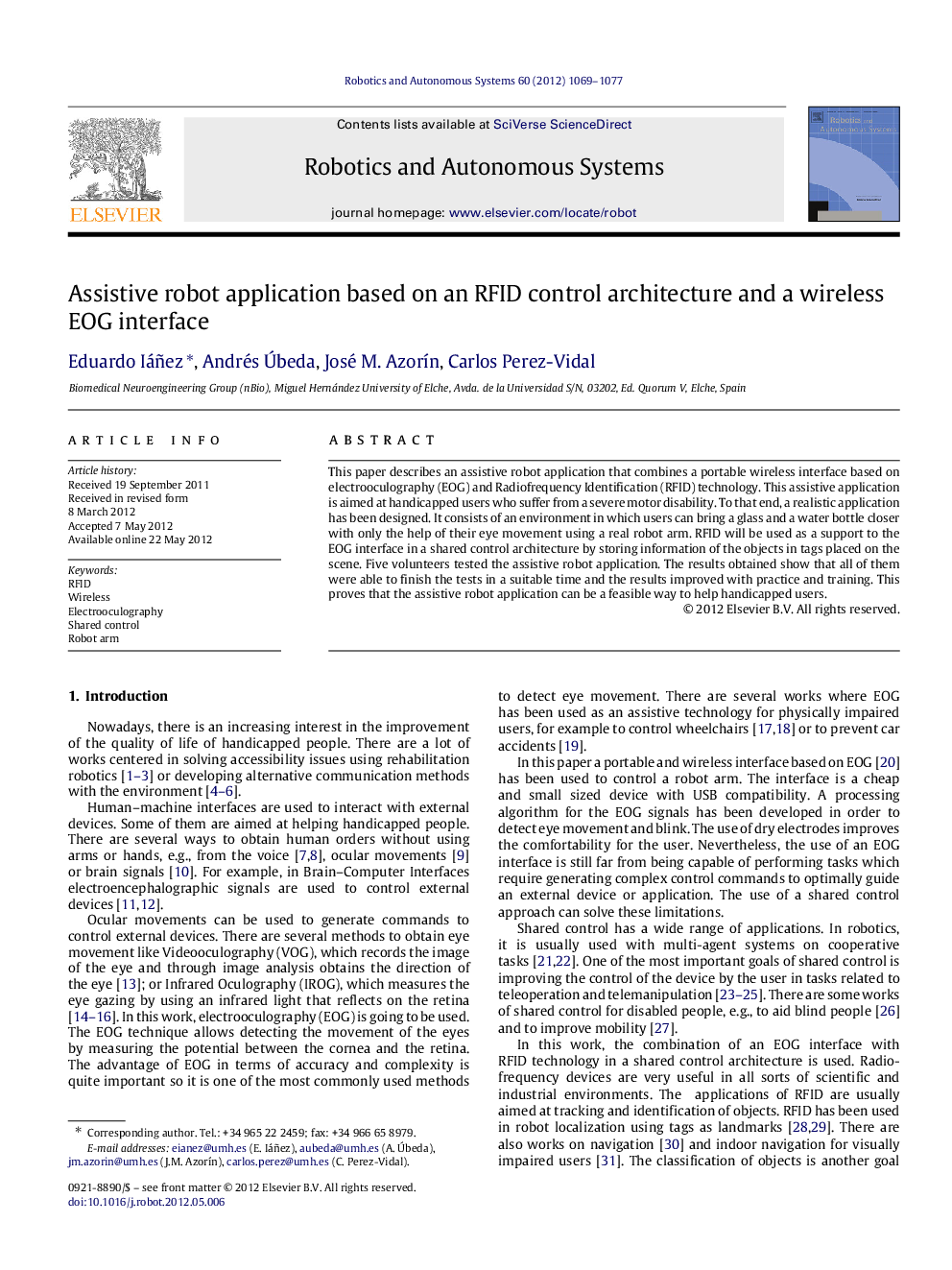| Article ID | Journal | Published Year | Pages | File Type |
|---|---|---|---|---|
| 412485 | Robotics and Autonomous Systems | 2012 | 9 Pages |
This paper describes an assistive robot application that combines a portable wireless interface based on electrooculography (EOG) and Radiofrequency Identification (RFID) technology. This assistive application is aimed at handicapped users who suffer from a severe motor disability. To that end, a realistic application has been designed. It consists of an environment in which users can bring a glass and a water bottle closer with only the help of their eye movement using a real robot arm. RFID will be used as a support to the EOG interface in a shared control architecture by storing information of the objects in tags placed on the scene. Five volunteers tested the assistive robot application. The results obtained show that all of them were able to finish the tests in a suitable time and the results improved with practice and training. This proves that the assistive robot application can be a feasible way to help handicapped users.
► The assistive robot application combines a portable wireless EOG interface with RFID. ► An application in a realistic domestic context has been developed. ► The users can bring a glass and a water bottle closer using a real robot arm. ► Five users performed the tests with good time results which improve with training. ► The assistive robot application can be useful for handicapped people.
